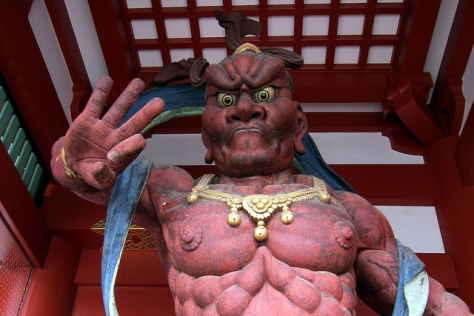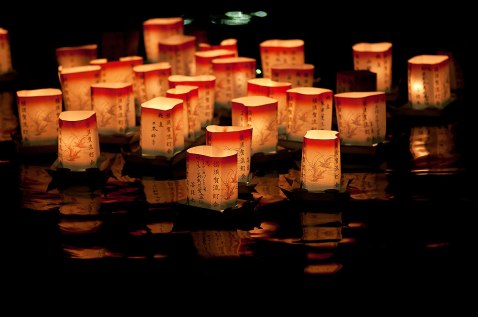Scary Is Cool
Long before Godzilla rose up from the murky depths of Tokyo Bay, monstrous creatures terrorized people across Japan. Demons, goblins, and ghouls inhabited the shadows—wandering between the living and the dead.
Japan is home to an astounding number of supernatural creatures. Soul-devouring oni, red-faced with fangs and horns. Shape-shifting cats, fire-breathing birds, and raccoon-dogs disguised as monks. Faceless ghosts floating through bamboo thickets. And Kappa, a hairy turtle goblin that’s fond of cucumbers, sumo, and drowning unsuspecting children.
Even household items spring to life when hapless owners mistreat, neglect, or break them. Restless mirrors, lanterns, sandals, and umbrellas sprout arms, legs, and an eye or two. Whether on foot or on horseback, the animated objects spell trouble.

Tales of encounters with bizarre beings have deep roots in Japan. Shinto teaches that the essence of being is within everything. Life energy exists in stone, plants, mountains, air, waterfalls, soil, animals, humans. Everything. All told, eight million spirits, or kami, dwell on earth. But here’s the rub—each spirit has two souls: one gentle, the other violent.

When Buddhism was introduced to Japan in the sixth century, it added new dimensions to the traditional belief in spirits. According to Buddhist teachings, the souls of the unenlightened must be purified to ensure their safe passage to the Land of the Dead. With the new teachings came two frightening possibilities: you could A) wind up as a ghost trapped in the Land of the Living, or B) receive a karmic ticket straight to Hell.
Buddhist hell is one place I do not want to go. Step into a temple and all it takes is one look at the Guardians of the Four Directions to understand that evildoers are going down. Ready for battle, the guardians are armed with swords, axes, bows and arrows, armor, killer abs, and above all— a ferocious stare. To symbolize their triumph over evil, each Guardian stands on top of a writhing, screaming Jaki.

That’s right. Small evil demons are the closest thing to my name in Japanese. “The Embodiment of Evil.” Underfoot and trampled. Usually fanged and/or horned. The good news is that according to legend, the Jaki repented and are now entrusted with holding the lanterns that light the righteous path.
I wasn’t raised with the concept of hell and as a child felt thankful that death was kept at an impersonal distance. It wasn’t until I was in my thirties that I lost anyone close to me. When my dad died suddenly, I had few visceral connections to his death. A closed casket and open grave were the only signposts.
My friends who grew up in Japan had a very different experience. For them, death and dying was personal and hands-on. When a grandparent died, the body stayed at home with the family until arrangements were made for the cremation. Once the ashes cooled, family members worked two at a time using large chopsticks to carefully remove all the bone fragments and place them in an urn.
Everyone participated in the process, including the children. For the larger bones, two people had to work together to hold and pass the fragments. The ashes were added later, sometimes distributed among several urns to be shared with relatives and the temple.
I’ve always been struck by the way the Japanese keep death and dying comfortably near. Most homes have an altar where families display photos of departed loved ones and place offerings of rice, flowers, incense, and favorite treats. Every summer during Obon, the spirits of the deceased return to the altar kept in their honor. People celebrate by gathering in public spaces to pound taiko drums and dance the same lilting steps that people danced 500 years ago when bon-odori began. On the last night of the three-day festival, they light floating lanterns to guide their ancestors’ spirits back to the otherworld.
It’s not surprising that spirit monsters and heroes are among Japan’s top exports. The dark video games, trading cards, and cosplay grew in fertile ground. For the Japanese, death and the spirit world are woven into life. An unbroken circle.











































